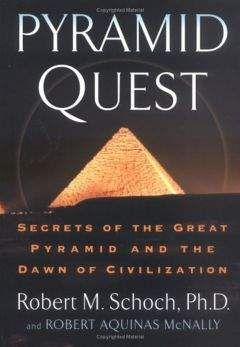Анетт Асп - Круто! Как подсознательное стремление выделиться правит экономикой и формирует облик нашего мира
130
Carre, Justin M., and Cheryl M. McCormick. 2008. “In your face: Facial metrics predict aggressive behaviour in the laboratory and in varsity and professional hockey players.” Proceedings of the Royal Society B: Biological Sciences 275: 2651–56.
131
Carre, Justin M., Cheryl M. McCormick, and Catherine J. Mondloch. 2009. “Facial structure is a reliable cue of aggressive behavior.” Psychological Science 20:1194–98.
132
Обзор см. в: Mende-Siedlecki, Peter, Christopher P. Said, and Alexander Todorov. 2013. “The social evaluation of faces: A meta-analysis of functional neuroimaging studies.” Social Cognitive and Affective Neuroscience 8:285–99.
133
Engell, Andrew D., James V. Haxby, and Alexander Todorov. 2007. “Implicit trustworthiness decisions: Automatic coding of face properties in the human amygdala.” Journal of Cognitive Neuroscience 19:1508–19.
134
Duarte, J., S. Siegel, and L. Young. 2012. “Trust and credit: The role of appearance in peer-to-peer lending.” Review of Financial Studies 25:2455–84.
135
“Cone-ing Is the New Planking!!!!!” www.youtube.com/watch?v=WygNjMSllLQ.
136
“Cone-ing Same McDonalds 3 Times in a Row.” www.youtube.com/watch?v=_JLnjq4uoJ0.
137
Bicchieri, C. 2005. The Grammar of Society: The Nature and Dynamics of Social Norms. Cambridge, UK: Cambridge University Press.
138
Posner, Eric A. 2000. Law and Social Norms. Cambridge, MA: Harvard University Press.
139
Cottrell, Catherine A., Steven L. Neuberg, and Norman P. Li. 2007. “What do people desire in others? A sociofunctional perspective on the importance of different valued characteristics.” Journal of Personality and Social Psychology 92:208–31.
140
D’Errico, Francesco, et al. 2009. “Additional evidence on the use of personal ornaments in the Middle Paleolithic of North Africa.” Proceedings of the National Academy of Sciences 106:16051–56.
141
Charles, Kerwin Kofi, Erik Hurst, and Nikolai Roussanov. 2009. “Conspicuous Consumption and Race.” The Quarterly Journal of Economics 124:425–67.
142
Anderson, Cameron, Robb Willer, Gavin J. Kilduff, and Courtney E. Brown. 2012. “The origins of deference: When do people prefer lower status?” Journal of Personality and Social Psychology 102:1077–88.
143
Simpson, B. 2006. “Social identity and cooperation in social dilemmas.” Rationality and Society 18:443–70; Van Bavel, Jay J., Dominic J. Packer, and William A. Cunningham. 2008. “The neural substrates of in-group bias: A functional magnetic resonance imaging investigation.” Psychological Science 19:1131–39.
144
Schouten, John W. and James H. McAlexander. 1995. “Subcultures of consumption: An ethnography of the new bikers.” Journal of Consumer Research 22:43–61.
145
Schouten, J. W., D. M. Martin, and J. H. McAlexander. 2007. “The Evolution of a Subculture of Consumption.” In Bernard Cova, Robert V. Kozinets, and Avi Shankar, eds. Consumer Tribes. New York: Routledge, pp. 67–75.
146
См., к примеру: Miller, Daniel. 1987. Material Culture and Mass Consumption. New York: Basil Blackwell. For a review, see Sassatelli, Roberta. 2007. Consumer Culture: History, Theory, and Politics. Los Angeles: Sage.
147
Inglehart, Ronald. 1977. The Silent Revolution: Changing Values and Political Styles Among Western Publics. Princeton, NJ: Princeton University Press; Inglehart, Ronald F. 2008. “Changing values among Western publics from 1970 to 2006.” West European Politics 31:130–46; Welzel, Christian, and Ronald Inglehart. 2010. “Agency, values, and well-being: A human development model.” Social Indicators Research 97:43–63.
148
Инглхарт называет эти новые ценности «постматериалистскими», а мы будем называть их «постдефицитными» (Инглхарт также употребляет этот термин), чтобы избежать вносящей путаницу коннотации постматериализма как отрицания материальной обеспеченности. Понятие постдефицита, напротив, предполагает изобилие материальных благ, которое играет растущую роль в достижении постматериалистических целей.
149
Хотя до конца неясно, что именно имела в виду Маргарет Тэтчер в этом своем высказывании, очевидно, что в поиске теоретических объяснений общественных процессов произошел сдвиг от макроэкономического уровня к микроэкономическому, главными действующими лицами которого стали отдельные личности и их деятельность.
150
Creanza, N., L. Fogarty, and M. W. Feldman. 2012. “Models of cultural niche construction with selection and assortative mating.” PLoS ONE7: e42744.
151
Jost, John T., Vagelis Chaikalis-Petritsis, Dominic Abrams, Jim Sidanius, Jojanneke van der Toorn, and Christopher Bratt. 2012. “Why men (and women) do and don’t rebel: Effects of system justification on willingness to protest.” Personality and Social Psychology Bulletin 38:197–208.
152
Kandler, Christian, Wiebke Bleidorn, and Rainer Riemann. 2012. “Left or right? Sources of political orientation: The roles of genetic factors, cultural transmission, assortative mating, and personality.” Journal of Personality and Social Psychology 102:633–45; Kanai, Ryota, Tom Feilden, Colin Firth, and Geraint Rees. 2011. “Political orientations are correlated with brain structure in young adults.” Current Biology 21: 677–80.
153
Smith, Eric Alden, et al. 2010. “Production systems, inheritance, and in equality in premodern societies.” Current Anthropology 51:85–94.
154
Мы называем такой тип конкуренции «кто кого», согласно принятой в соответствующей литературе терминологии. На самом деле почти все приводимые в ней примеры подобных отношений (к примеру, дилемма заключенного) в строгом смысле не являются отношениями «кто кого».
155
Обзор и выступление в защиту такой критики см. в: Schor, J. B. 2007. “In defense of consumer critique: Revisiting the consumption debates of the twentieth century.” The Annals of the American Academy of Political and Social Science 611:16–30.
156
Bourdieu, 1984, Distinction.
157
De Waal, Frans B. M. 1986. “The brutal elimination of a rival among captive male chimpanzees.” Ethology and Sociobiology 7:237–51.
158
Smith, Heather J., et al. 2012. “Relative deprivation: A theoretical and metaanalytic review.” Personality and Social Psychology Review 16:203–32.
159
Inglehart, Ronald, et al. 2008. “Development, freedom, and rising happiness.” Perspectives on Psychological Science 3:264–85.
160
Обзор этой идеи см. в: Powell, Walter W., and Kaisa Snellman. 2004. “The knowledge economy.” Annual Review of Sociology 30:199–220.
161
Bielby, William T. 2004. “Rock in a hard place: Grassroots cultural production in the post-Elvis era.” American Sociological Review 69:1–13.
162
Bielby, “Rock in a hard place,” 8.
163
United States Department of Labor, Bureau of Labor Statistics. http://data.bls.gov/timeseries/LNU04000000?years_option=all_years&periods_option=specific_periods&periods=Annual+Data.
164
Gair, Christopher. 2007. The American Counterculture. Edinburgh: Edinburgh University Press.
165
Rentfrow, Peter J., and Samuel D. Gosling. 2003. “The do re mi’s of everyday life: The structure and personality correlates of music preferences.” Journal of Personality and Social Psychology 84:1236–56.
166
Rentfrow, P. J., J. A. McDonald, and J. A. Oldmeadow. 2009. “You are what you listen to: Young people’s stereotypes about music fans.” Group Processes & Intergroup Relations 12:329–44.
167
Mulligan, Mark. 2014. “The Death of the Long Tail: The Superstar Music Economy.” MIDiA Insights Report. Наши подсчеты основаны на предположении, что вы будете слушать каждую композицию от начала до конца и ее средняя длина составляет четыре минуты. www.statcrunch.com/5.0/viewreport.php?reportid=28647&groupid=948.
168
На наш взгляд, это весьма консервативная оценка, хотя, конечно, понятие «жанр» не точно определено.
169
Winograd, Morley, and Michael D. Hais. 2011. Millennial Momentum: How a New Generation Is Remaking America. New Brunswick, NJ: Rutgers University Press.
170
Милнер утверждает, что «значительная часть исследований поп-культуры и образовательных учреждений берет за основу иерархическое представление, которое скрывает более сложные статусные отношения во многих (а возможно, в большинстве) школах постмодернистского общества». Milner, Murray, Jr. 2004. Freaks, Geeks, and Cool Kids: American Teenagers, Schools, and the Culture of Consumption. New York: Routledge, p. 127.
171
Milner, Murray. 2010. “Status Distinctions and Boundaries.” In John R. Hall, Laura Grindstaff, and Ming Cheng Lo, eds. Handbook of Cultural Sociology. New York: Routledge, pp. 295–304.
172
Chen, Stephanie. 2010. “The ‘Glee’ effect: Singing is cool again.” CNN Living, November 15. www.cnn.com/2010/LIVING/11/15/glee.effect.show.choir.comeback/.
173
Martin, Diane M., John W. Schouten, and James H. McAlexander. 2006. “Claiming the throttle: Multiple femininities in a hyper-masculine subculture.” Consumption, Markets and Culture 9:171–205.
174
Boehm, Christopher. 2012. “Ancestral hierarchy and conflict.” Science 336:844–47.
175
См., к примеру: de Botton, Alain. 2004. Status Anxiety. New York: Pantheon.
176
Vanhaeren, Marian, and Francesco d’Errico. 2005. “Grave goods from the Saint-Germain-La-Riviere burial: Evidence for social inequality in the Upper Palaeolithic.” Journal of Anthropological Archaeology 24:117–34.
177
Sassaman, Kenneth E. 2004. “Complex hunter-gatherers in evolution and history: A North American perspective.” Journal of Archaeological Research 12:227–80.
178



